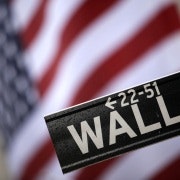Solving Obama's yuan problem
Recently, Beijing announced it would permit the yuan to rise in value as much as one per cent each day. This was greeted by China watchers as an important indication Beijing would finally permit the yuan to rise against the dollar significantly enough to reduce the US trade imbalance with the Middle Kingdom.
Although the Obama administration views the yuan as terribly undervalued and the resulting advantage this offers Chinese manufacturers in US markets a major drag on US economic recovery, nothing has happened.
On April 15, the yuan traded at 6.28 per US dollar, and today, it is trading at virtually the same level.
When the Clinton administration began negotiating China's entry into the WTO in 1998, the yuan traded at 8.28, and the US bilateral trade deficit was $56 billion. The resulting accession agreement was intended to provide China's continued access to US markets, and much better access for US exports in the Middle Kingdom.
It has not worked out.
Then as now, General Motors makes some of the best selling cars in China. Analysts and members of Congress, who supported the accession agreement, were assured by the Clinton administration it would permit the United States to export cars and other products into China.
China still maintains high tariffs and administrative barriers to auto imports. Only the most expensive foreign vehicles – for which price is not much of a concern to wealthy purchasers – can scale this protective wall.
The same can be told for new products of great strategic importance – advanced solar panels and windmills.
The biggest barrier to US sales in China, and greatest advantage Chinese products enjoy in US markets, remains the undervalued yuan.
Since 1998, investment in export industries has accelerated China's modernisation – GDP is up 250 per cent. However, employment has increased only 12 per cent, and the balance of hyper-growth has been accomplished through an explosion in worker productivity – up 250 per cent, as compared to 25 per cent in the United States. That difference should be reflected in the value of the yuan.
Inflation has been a bit higher in the United States – about 9 per cent cumulatively – and that should push up the yuan too.
As a consequence of stronger productivity growth and lower inflation, the yuan should be at about 3.73 per dollar – more than 40 per cent less than its current value.
At various times, Beijing has permitted the yuan to rise modestly – since 1998, about 32 per cent. However, Beijing does not permit exporters to keep most dollars earned selling abroad, but instead requires those converted to yuan. The Peoples Bank prints yuan to purchase dollars to prevent its value from rising too much. Those purchases have swelled Beijing's foreign currency reserves from $53 billion to $3.2 trillion.
Capital flows can significantly affect currency values, but Beijing regulates those. It severely limits its citizens' holdings of foreign assets.
The rush of foreign ventures in China notwithstanding, Beijing limits foreign investment in most industries, including manufacturing, mining and banking. End those, and upward pressure on the yuan would increase dramatically.
Since 1998, the US bilateral deficit with China has swelled to nearly $300 billion. The drag on the demand for what Americans make far outweighs the benefits of President Obama's stimulus package, especially because it is permanent and growing.
Overall, permitting China's currency to trade freely, and liberalising capital flows in both directions would redress the trade imbalance.
Chinese workers would be richer – able to enjoy more foreign products at dramatically lower prices. US GDP would rise by some $500 billion, creating 5 million new jobs, and grow more rapidly afterwards.
China's xenophobic leadership simply can't see the gains from truly letting markets work, instead of looking for ways to cheat the system to advantage its exporters. In the process, it is cheating Chinese workers out of huge gains in living standards, and driving down US growth, employment and wages.
In the presidential campaign, effectively dealing with China will be a central issue. Well it should be, because nothing else weighs more heavily on US prosperity and the future of US leadership in the global economy.
Peter Morici is an economist and professor of business at the University of Maryland, and former Chief Economist at the US International Trade Commission.
















